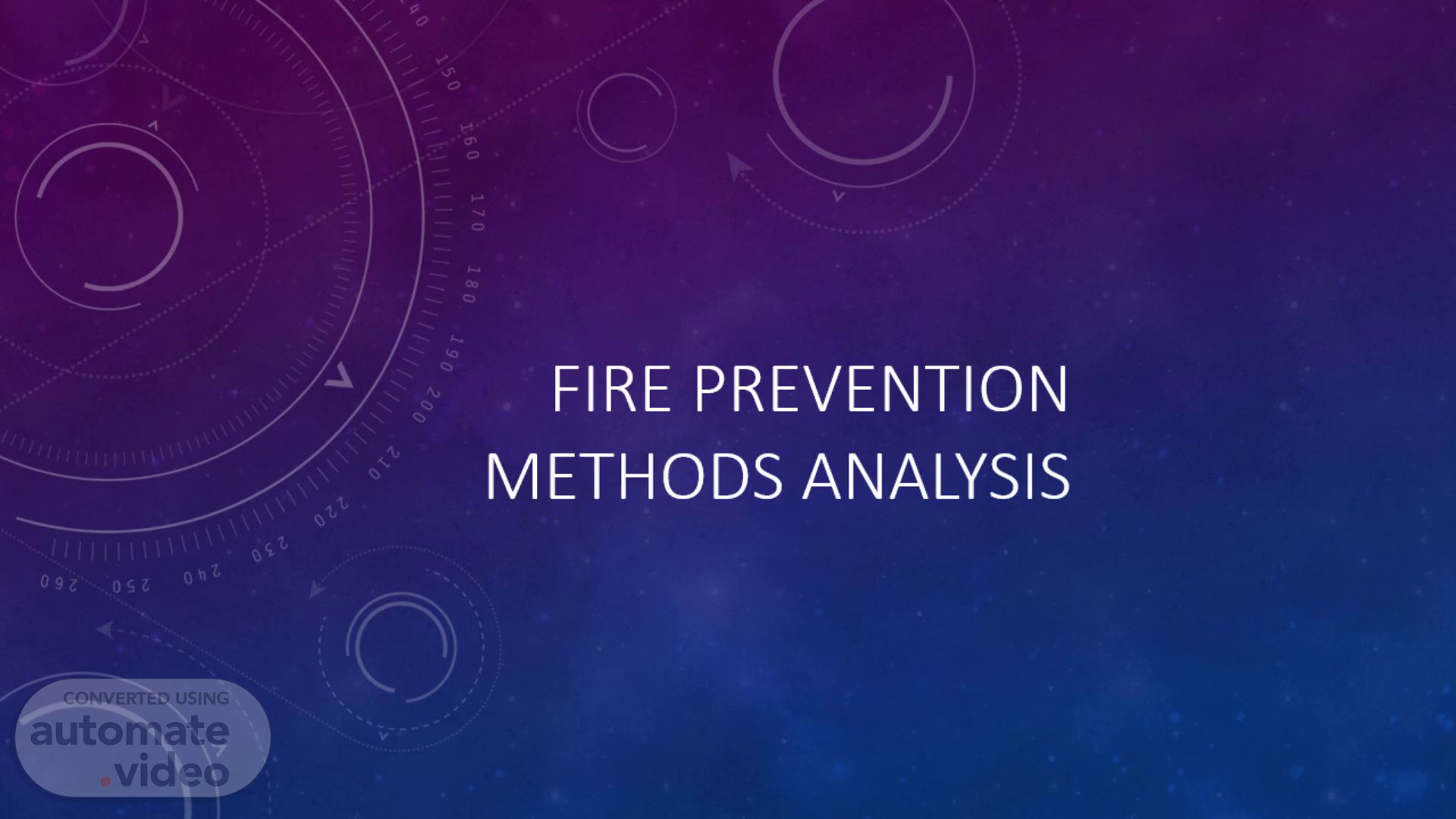Scene 1 (0s)
Fire prevention methods analysis. Presented by: David Thibault.
Scene 2 (7s)
introduction. The fire at Our Lady of Angels Catholic School, Illinois, in 1958 was a regrettable and preventable incident that caused significant loss of life, injuries, and distress. The presentation discusses a plan to prevent such an incident from occurring..
Scene 3 (24s)
History of the event. The fire occurred at Our Lady of Angels Catholic School, Illinois. The fire spread and caused severe devastation due to an existing grandfather clause that allowed the school to remain compliant despite numerous fire hazards (University of Illinois, 2024). The fire mainly affected the second floor and the north wing, trapping the students in room 208-212 (University of Illinois, 2024). 92 learners and 3 nuns succumbed to injury, while 77 people faced severe injuries..
Scene 4 (50s)
Role of fire prevention in risk reduction. Fire prevention identifies and prioritizes risks associated with fires and their spread. These initiatives minimize the occurrence and severity of fires in the area. Fire prevention is relevant in community risk reduction as it: Prevents injuries. Mitigates loss of life. Reduces environmental damage. Prevents property damage..
Scene 5 (1m 10s)
Fire prevention impact on identified incident. Comprehensive fire prevention measures would have greatly impacted the incident above. The following measures would have mitigated the fire spread: Replacing the doors with glass transoms above them. Multiple accessible fire escapes would have prevented students and teachers from being trapped. Fire resistant stairwells could have prevented the spread of the fire from the basement. Heavy-duty fire doors from the basement to the second floor could have prevented the spread..
Scene 6 (1m 35s)
Present fire prevention programs. The “grandfather clause” present implied that the building was compliant with the Chicago Fire Code. This clause acknowledges compliance with previous fire regulations, that ensured the building had: A fire escape – though it was poorly positioned. A brick exterior to prevent the spread of fires from one building to another. Fire alarms – they were unmarked. Fire extinguishers. Numerous fire hazards promoted the spread of the fire (University of Illinois, 2024)..
Scene 7 (1m 59s)
Comprehensive approach of prevention. Ensuring that public buildings such as schools and hospitals are fitted with modern fire prevention and suppression technology, such as: Smoke detectors. Sprinklers. Accessible and numerous fire escapes. More fire prevention infrastructure. Public education to raise awareness on fire prevention, and reporting fire incidents (Al-Hajj et al., 2023)..
Scene 8 (2m 20s)
Source of authority for fire prevention. Authority for fire prevention in Chicago is at the local, state, and federal levels. Local level: Chicago Fire Prevention Bureau. State level: Illinois State Fire Marshall. Federal level: National Fire Prevention Association (NFPA)..
Scene 9 (2m 36s)
Code enforcement concepts. The Chicago Fire Code is enforced in Chicago, Illinois. The code allows the Fire Prevention Bureau to conduct inspections, review construction plans and give permits. The code also ensures that fines and penalties are provided for any violations that increase the significance of a fire threat..
Scene 10 (2m 54s)
Revenue streams supporting fire prevention. Traditional Revenue Streams Taxation. Government funding. Fines and penalties. Non-Traditional Revenue Streams Fundraising through events and charities. Partnerships with relevant organizations, such as insurance companies. Crowdfunding initiatives through platforms such as GoFundMe..
Scene 11 (3m 12s)
Considerations for revenue streams. Public support for fire prevention initiatives. Enforcement of Fire Codes.. The impact these revenue streams will have on the public. Accountability..
Scene 12 (3m 25s)
Public education component. Target Audience: Community members. Homeowners and Business owners. Educators and other individuals in public institutions. Methods for Effective Investigation: Surveys to evaluate public awareness. Record evaluation to determine the trend of fires in the area..
Scene 13 (3m 41s)
Communicating the plan. Communication will be done through social media. The social media campaign will be called “Fire Safety and Prevention.” Professionals will discuss the role of the public in videos and respond to their questions and concerns in the comment section..
Scene 14 (3m 57s)
Communicating the plan. The plan will also be communicated through print media and a Fire Prevention Event. Community members will be invited to the event, where a fire department representative will review the incident and discuss the public’s role in preventing fires. Pamphlets detailing the plan and the role of the public will also be provided..
Scene 15 (4m 16s)
Professional development needs. Professional development is necessary to ensure a well-trained and educated workforce. The initiatives that will be taken to ensure this include: Certification programs for fire department employees. Training and seminars. Mentorship programs..
Scene 16 (4m 32s)
conclusion. The fire incident at Our Lady of Angels Catholic School, Illinois, occurred due to implementing outdated fire prevention protocols. The plan to prevent such an incident in another institution is to ensure each institution has up-to-date resources to prevent fires and promote public education and awareness. The funds will arise from traditional methods, such as taxation, and non-traditional methods, such as crowdfunding, using platforms like GoFundMe..
Scene 17 (4m 55s)
References. Al-Hajj, S., Thomas, L., Morris, S., Clare, J., Jennings, C., Biantoro, C., ... & Pike, I. (2023). Community fire risk reduction: longitudinal assessment for HomeSafe Fire Prevention Program in Canada. International journal of environmental research and public health, 20(14), 6369. Twigg, J., Christie, N., Haworth, J., Osuteye, E., & Skarlatidou, A. (2017). Improved methods for fire risk assessment in low-income and informal settlements. International journal of environmental research and public health, 14(2), 139. Shokouhi, M., Nasiriani, K., Cheraghi, Z., Ardalan, A., Khankeh, H., Fallahzadeh, H., & Khorasani-Zavareh, D. (2019). Preventive measures for fire-related injuries and their risk factors in residential buildings: a systematic review. Journal of injury and violence research, 11(1), 1. University of Illinois. (2024, April 9). LibGuides: Significant Illinois fires: Our Lady of the angels school fire. LibGuides at University of Illinois at Urbana-Champaign. https://guides.library.illinois.edu/c.php?g=416856&p=2840506 Giesler, M. (2016). Fire and Life Safety Educator: Principles and Practice: Principles and Practice. Jones & Bartlett Learning..
